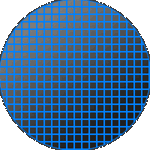Site Supporter
- Followers
- 21
- Following
- 1
- Joined
- Oct 22, 2021
- Posts
- 4,944
- Likes Received
- 3,820
- Name
- Tim
- Country
- United States
- City/State
- SE Michigan
Rumors guy has no real specs yet, but it sounds like the announcement date is solid.
He speculates 95MP from one of his sources.
In my mind, that leaves room for a 60-70MP A1-II, a 45MP A9-III, A 40MP A7-V, and a 33MP A7C-II.
Just sayin'!
With the A7-IV still hitting the top of the charts as a #1 best-seller (B&H), it may be several years before the A7-V is released.
 www.sonyalpharumors.com
www.sonyalpharumors.com
He speculates 95MP from one of his sources.
In my mind, that leaves room for a 60-70MP A1-II, a 45MP A9-III, A 40MP A7-V, and a 33MP A7C-II.
Just sayin'!
With the A7-IV still hitting the top of the charts as a #1 best-seller (B&H), it may be several years before the A7-V is released.
RUMOR: Sony will announce the new A7rV on October 26th! – sonyalpharumors
 www.sonyalpharumors.com
www.sonyalpharumors.com


